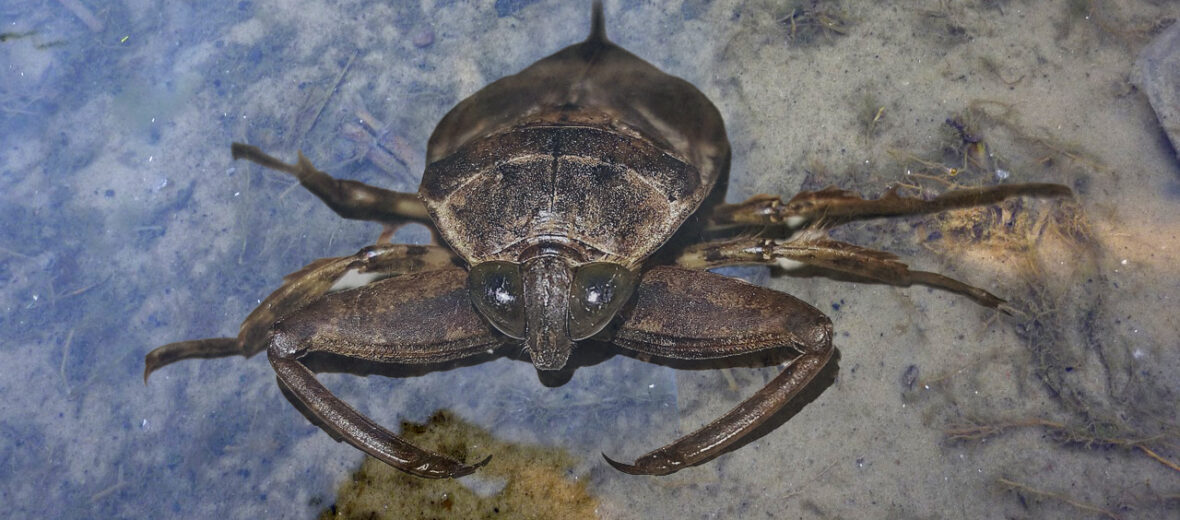
The giant water bug, aka Indian toe-biters, toe-biters, electric-light bugs, alligator fleas, or alligator ticks, are the largest insect in the order Hemiptera. They prefer to dwell in marshes, bogs, freshwater ponds, and slow-flowing streams. Giant water bugs are found in North America, Central America, South America, Europe, Africa and Asia. These aquatic insects are not currently evaluated by the IUCN.
First the Stats…
Scientific name: Belostomatidae
Length: Up to 4.5 inches
Lifespan: Up to 1 year
Now on to the Facts!
1.) There are approximately 170 known species of these insects.
2.) While nymphs can respirate (breathe) underwater, adults have to breath oxygen via a retractable tube.
3.) Most species of these insects possess front legs that have evolved into modified raptorial appendages that they use to grab onto their prey.
4.) An African species (Limnogeton) has normal forelimbs and is a specialized snail eater.
5.) Once a prey item (or a nearby toe or finger) is grabbed they are stabbed with a proboscis and a potent proteolytic saliva is injected, allowing the water bug to suck out the liquefied remains.
But wait, there’s more on the giant water bug!
6.) Some water bugs can fly, while others have underdeveloped wings and are thus incapable of flight.
7.) Fish, amphibians, snails, and crustaceans, baby turtles, and water snakes are all on the menu.
Did you know…?
In parts of Asia, giant water bugs are a popular food item. They are often fried in oil and sold at marketplaces.
8.) Even though their bite is horribly painful, their bite poses no medical significance to humans or large mammals.
9.) In an exhibition of parental care, females lay their eggs on the wings of the male, where they’ll stay until they hatch.
10.) It is the females who seek out males with which to mate. This role reversal is characteristic of R. L. Trivers’ parental investment theory.
11.) Giant water bugs are preyed on by birds, fish, and larger aquatic predators.
Now a Short Giant Water Bug Video!
Be sure to share & comment below! Also, check out the Critter Science YouTube channel. Videos added regularly!
Want to suggest a critter for me to write about? Let me know here.
Some source material acquired from: Wikipedia & IUCN



